Boerboel is a South African breed of large working dogs, known for their endurance and developed protective-guard instinct.
Boerboel is an athletic “fighter” with whom it is not scary to walk through the most disadvantaged areas and dark alleys. Capable of repelling any surprise attack in seconds, this fawn brutal is always alert and ready to defend his master 365 days a year. It’s not easy to get along with the Boerboel: this is a dog personality that respects the owner, not for beautiful eyes, but real dignity. But if you still won his favor and trust, you can be sure – this is for life.
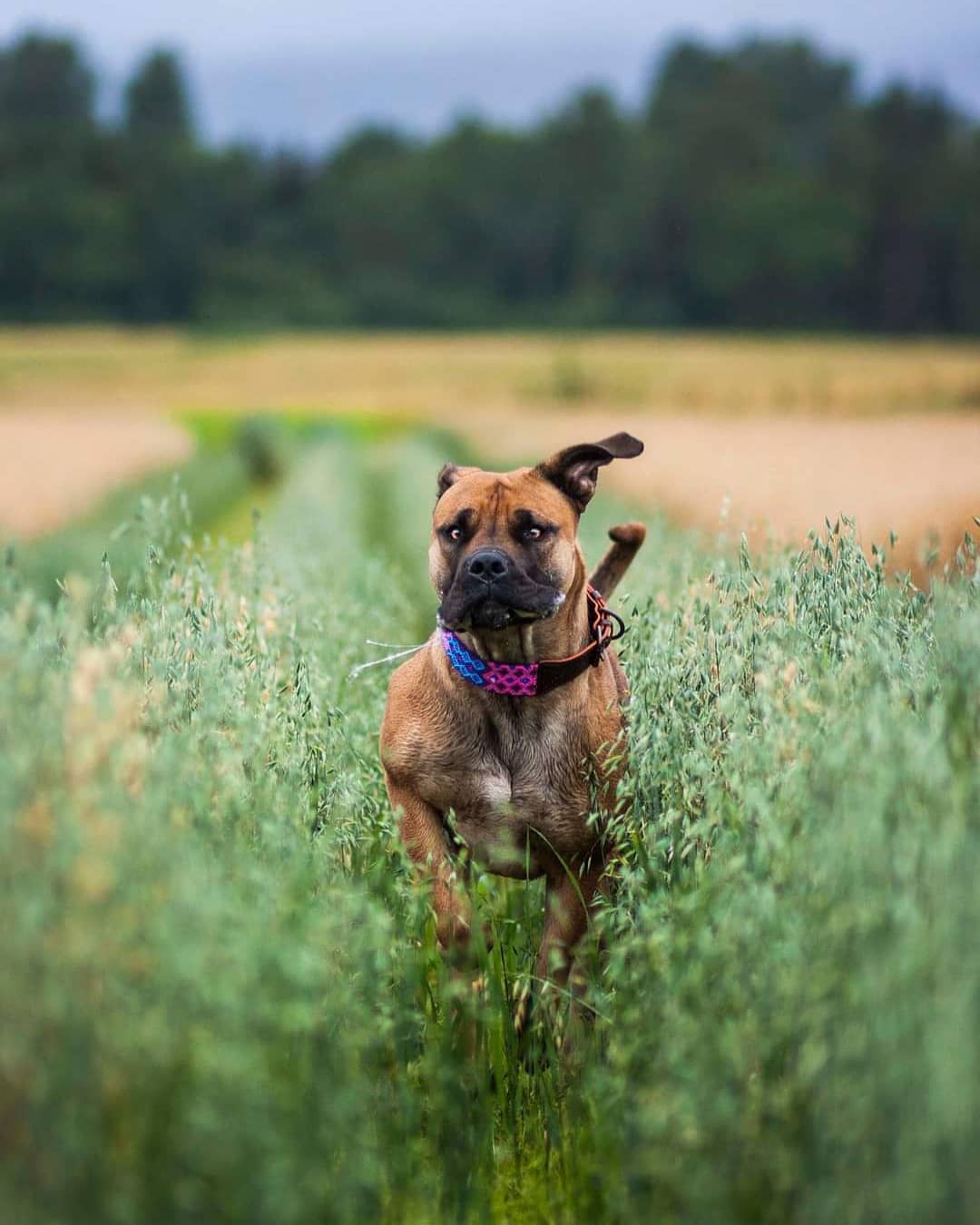
Boerboels settled in Africa in the 17th century, but it is quite possible to trace their history. It is believed that the ancestors of these severe dogs were European Molossians, who emigrated to the southern part of the African continent along with settlers from Scandinavia. Time passed, animals interbred with aboriginal breeds, as well as other dogs arriving on the mainland, which became a prerequisite for the birth of the Boerboel clan.
At the beginning of the 19th century, the blood of English Bulldogs and Mastiffs was mixed into the breed’s phenotype. The animals were brought with them by the British, who rushed to Cape Town to defend it from the encroachments of Napoleon. The Afrikaner farmers also made a modest contribution to the development of the working qualities of the Boerboels, who selected only the most assertive and aggressive individuals to protect their own farms. This made the Boerboel’s first-class watchmen and bodyguards, capable of single-handedly fighting a whole group of burglars and other lovers of easy money.
The 20th century brought with it widespread urbanization and with it the oblivion of the breed. Peasant farms collapsed, their owners moved with their belongings to the cramped suburbs, so the need for large dogs-bodyguards disappeared. Left to themselves, the animals slowly degenerated, so that by the 70s there would not have been a pair of purebred Boerboels in the vicinity of Cape Town.
In the mid-80s, a group of enthusiastic farmers set about restoring the animal population, for which they had to equip an expedition and comb the entire territory of today’s South Africa. During the impromptu “tour”, 250 Boerboels were collected, most of which turned out to be unfit for breeding by mestizos. However, the breeders stubbornly did not give up, and in the end, about 70 animals were able to obtain registration and permission for mating.
In 1990, the Boerboel Breeders Association was opened in Africa, and in 2004, WWB, the first international organization dealing with breeding and popularization of the breed, began its work in America. Pretty soon dogs became interested in other countries as well, but the desire of the townsfolk to see tough, impulsive guards in their pets played a cruel joke with the Boerboels. Hoping to make animal breeding more profitable, breeders began to cultivate in their wards such character traits as wickedness and aggressiveness that are in demand among buyers. As a result, whole lines of dogs with an unbalanced psyche were born. Denmark was the first to react to this, completely banning the breed from breeding. The Russian authorities were not so categorical, but in 2011 Boerboels were included in the list of dangerous breeds in our country, falling under the law “On the Responsible Treatment of Animals.”
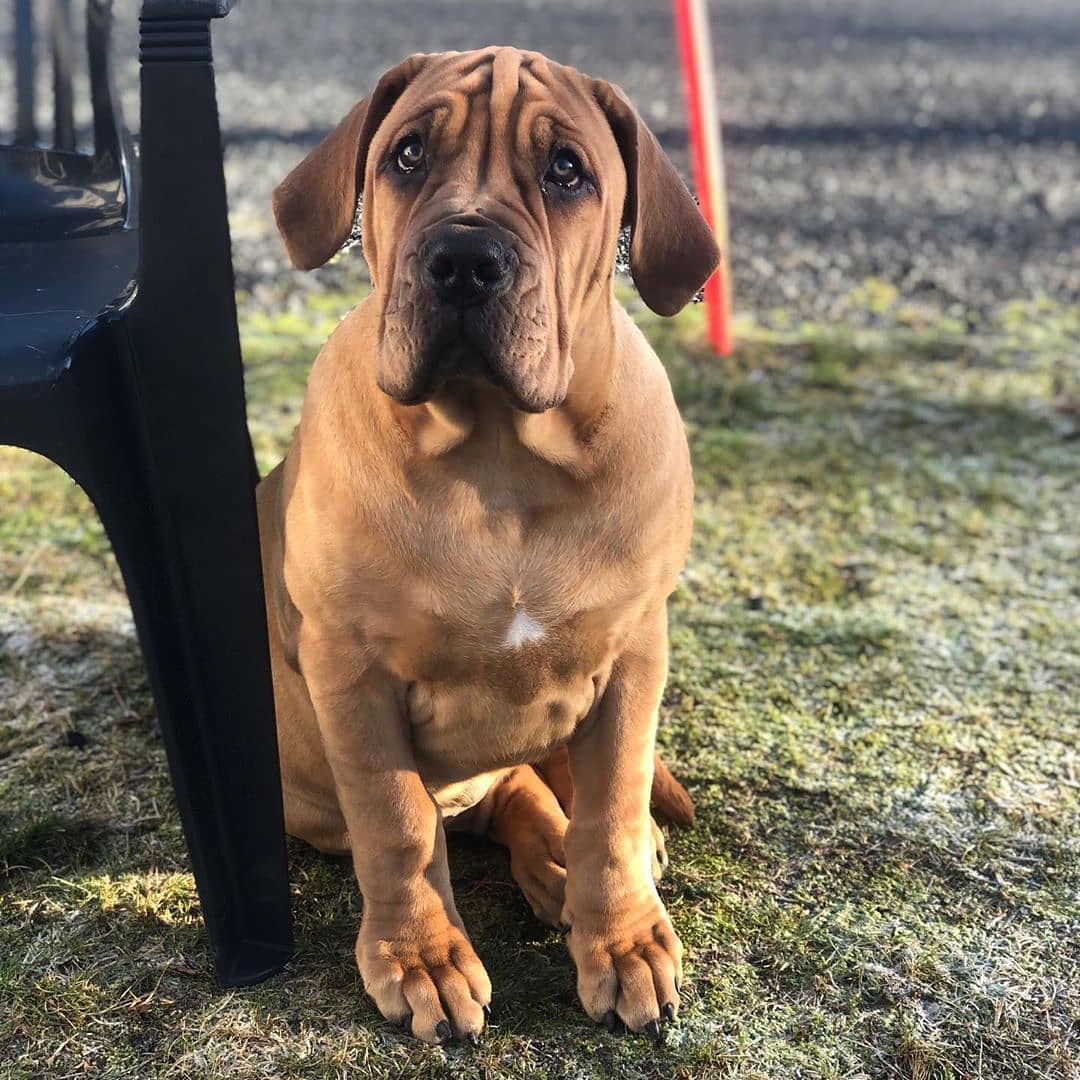
Boerboel is a textured, thoroughly pumped-up “athlete” with an unexpectedly calm and intelligent look. He is a heavyweight and far from being a kid (the growth of an average male at the withers is 64-70 cm), which makes him seem like an extremely formidable creature, crossing the road which is literally dangerous to health.
The head of the Boerboel is a large, rectangular skull with a flat crown and forehead and a not too sharp stop. The dog’s muzzle is wide, somewhat narrowed towards the tip of the nose. The optimal length of the muzzle is slightly less than ½ the length of the head.
The main weapon of the Boerboel is its teeth, which are strong and strong in the representative of this breed. The dog should have a scissor bite, although its direct version, as well as undershot bite without retreat, are also not considered defects.
A large black nose looks even more massive due to wide, open nostrils.
The eyes of a regular Boerboel should be dark brown, widely spaced, and pronouncedly rounded. Lighter colors of the iris are not very desirable but are acceptable.
The typical Boerboel ear shape is a regular triangle. The set of the ear canal is wide and relatively high, while the ear itself is tightly pressed against the skull. If something catches the dog’s attention, the base of the ear is raised, but usually not higher than the top line of the head.
Dogs of this breed have a very massive, medium-long neck with a prominent nape and a slight dewlap (the latter may be absent).
The Boerboel has a dense, square body with a wide back and a powerful, almost horizontal croup. The ribcage of the animal is deep, drooping almost to the elbows, the abdomen is moderately tucked up.
The strong, massive legs of the Boerboel are distinguished by strong bones and good muscularity. The hind limbs provide the animal with a springy push due to the normal articulation angles and strong ligaments. The shoulder blades and elbows are tightly pressed to the body, thereby giving the dog the necessary freedom and straightness. Boerboels have large paws, arched toes, gathering in a large lump. The hind legs are somewhat inferior in size to the front ones.
The tail of the Boerboel can be docked, or it can maintain its natural length – everything is decided by the preferences of the owner. The normal tail does not curl into a ring but reaches the length of the hock. The optimal length of a docked tail is 3 or 4 vertebrae.
The coat of the South African Boerboel is short, dense, and smooth.
Elastic, loose skin is the hallmark of Boerboels. It is thanks to this feature that shallow wrinkles are collected on the dog’s forehead and a slight dewlap forms on the neck. In some areas of the body, the skin has black pigmentation, for example, around the eyelids, in the area of the lips, paw pads, and reproductive organs
Purebred Boerboels have a solid fawn (beige) or brindle coat color. The signature black mask on the face is an optional attribute, although animals that do not have it look less elegant.
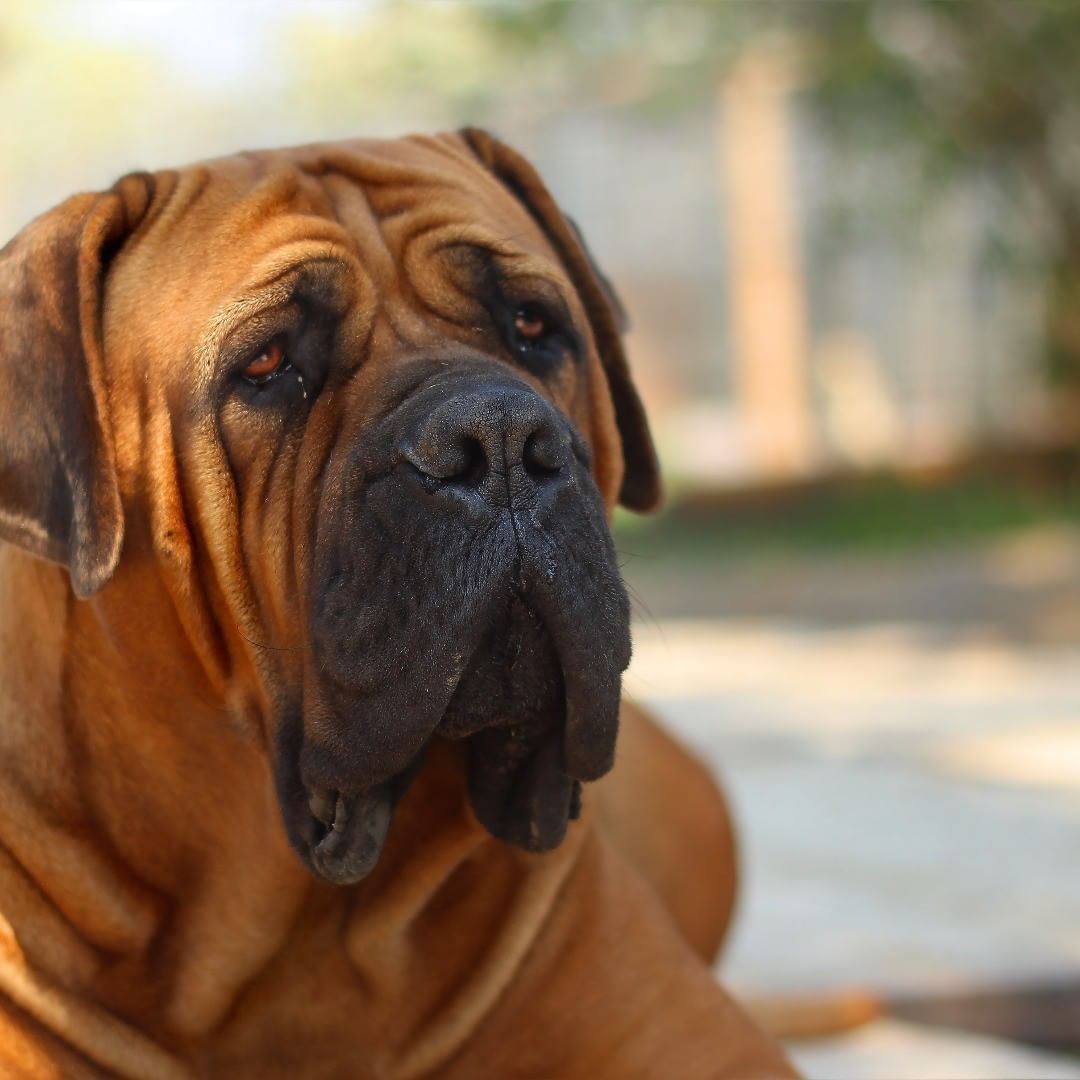
Disqualifying vices
Any defect in appearance, which has a strong discrepancy with the standard, is automatically regarded as a defect and threatens the animal with inadmissibility to exhibition events. In Boerboels, these defects include:
- cowardice or aggression towards a person;
- dimensions are less or more than those fixed by the standard;
- too miniature skull;
- overshot or undershot mouth;
- depigmentation of the nose, lips, eye area, paw pads;
- the blue tint of the iris;
- erect ears;
- coat of black and piebald colors.
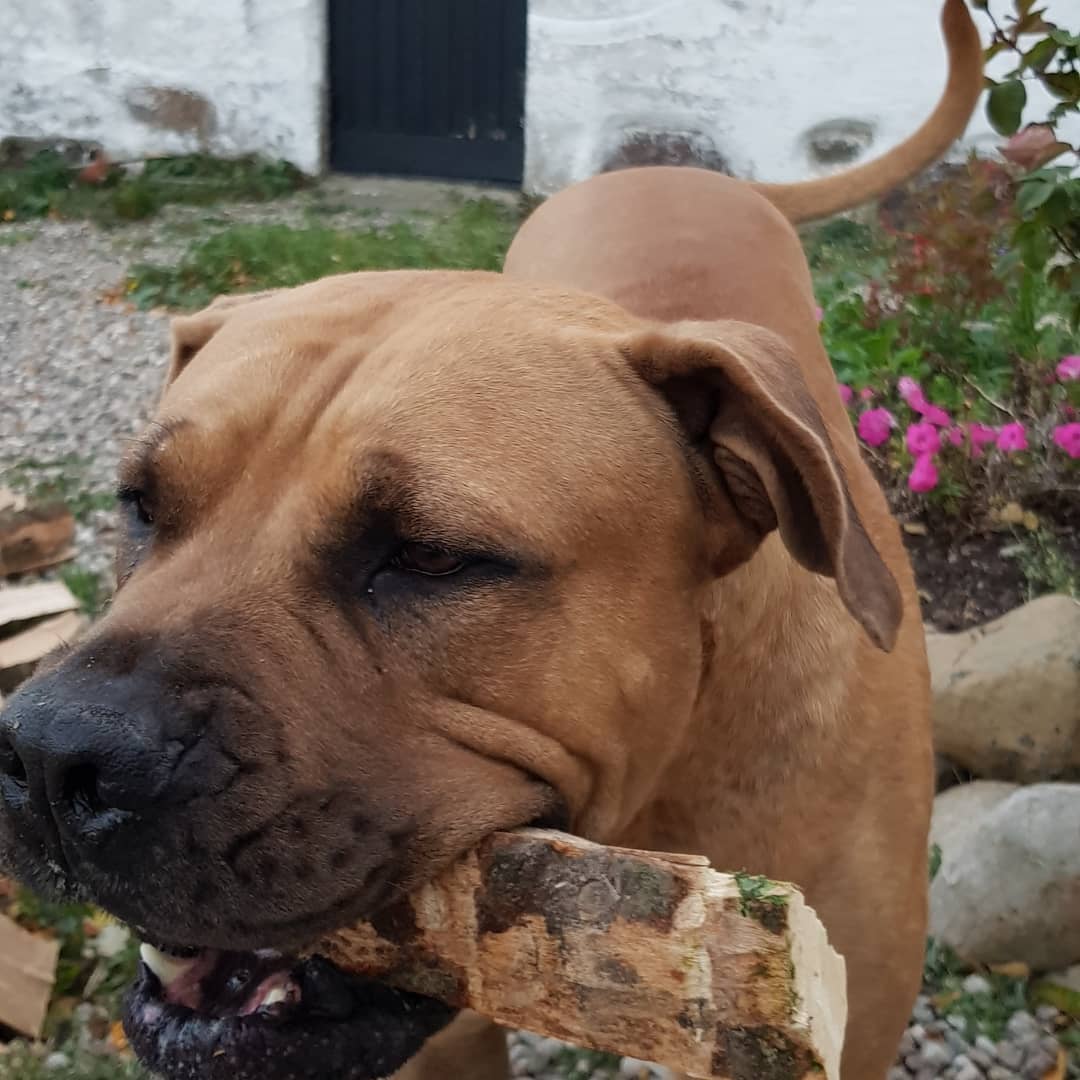
Buying a Boerboel is a big lottery because due to commercial breeding, the character and temperament of the animals have undergone significant changes. So, for example, having bought two puppies in different kennels, there is a risk of raising a pair of classic antagonists, one of which will be the embodied prudence, and the second – a clot of aggression. So before purchasing a dog, it would be nice to clarify which breeding lines the breeder specializes in fighting or classic.
If we talk about the ideal Boerboel, then he should first of all be manageable, balanced, and friendly towards all family members, without exception. Do not expect that the representative of this breed will be delighted with strangers, but he should not tear their trousers to shreds either. A socialized, well-mannered dog may be somewhat detached while you chat with a stranger, but rest assured, all this time he carefully scans your interlocutor. One threatening gesture towards the owner – and the pet turns on full alert mode, attacking the intruder.
Boerboel can adore its own owner to madness, but at the same time, he will not miss the opportunity to crush him under him. Prepare for this confrontation, which usually begins in adolescence, in advance. This is not a decorative fluffy, whose attempts at leadership cause tears of sincere affection, but a serious “fighter” who recognizes only the cult of strength. If the dog does not respect the owner, sooner or later she will come into open conflict with him. Well, as usual, clashes between a Boerboel and a man end, it’s easy to guess.
If the South African Boerboel will let anyone down with a disrespectful attitude towards themselves, it is the children. A professional babysitter will not come out of him (not the temperament), but it is absolutely not a burden for the “African” to be friends with the kids. On the other hand, it is not worth relying unconditionally on the good nature of such a large and serious dog, so constant control over the joint pastime of the child and the animal should take place.
Do not perceive the Boerboel as a blunt security guard, fit only for official activities. Yes, he is not a genius, but smart enough not to create problems for you in everyday life. Also, do not forget that this is a breed whose intelligence needs to be constantly developed. Communicate and train a lot with your dog – get a calm and quick-witted helper. You allow your pet to hone its protective qualities on its own – get ready to coexist with an uncontrollable dominant that does not recognize any authorities.
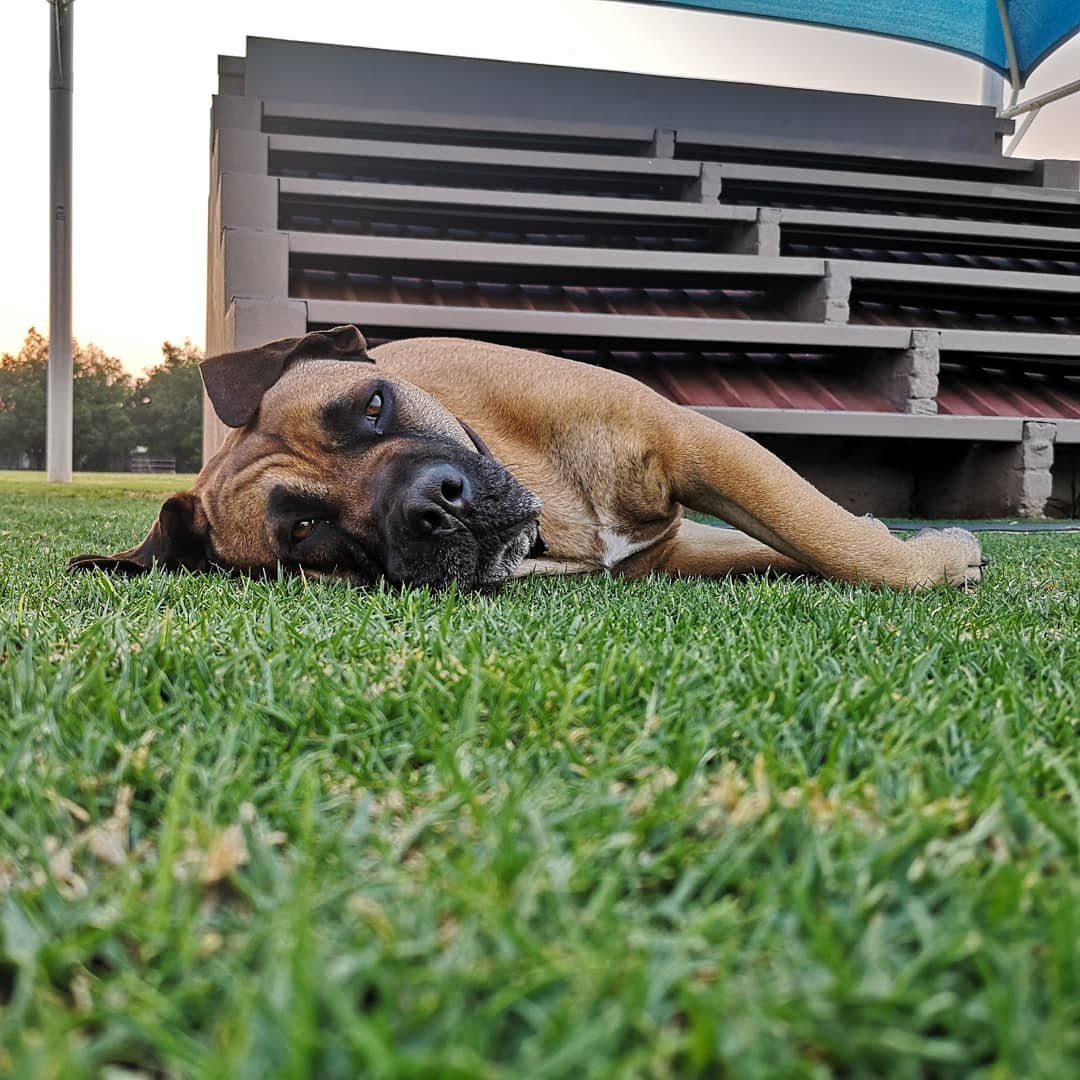
The South African Boerboel is a dog that should be trained at least for the safety of others. Representatives of this breed are not very fond of lessons, so they will have to be motivated with a treat or a favorite toy. As for the basics of home etiquette, they must be fixed with the pet for several years. Do not be indignant if the Boerboel periodically breaks down and pretends that he has forgotten the previously successfully observed rules of conduct. With age, this “forgetfulness” goes away.
It is necessary to start working with the dog in the first weeks of its appearance in the house. Be sure to introduce your kid to the prohibition system. The puppy should not bite, play hugs with family members, stand on its hind legs and put the front legs on the person’s shoulders, and also pull the leash when walking on the street. It is better to suppress disobedience attempts abruptly and rather rudely. If a young Boerboel in the game tries your hands with his teeth, show the animal who is in charge here by shouting sternly at the bully and lifting him by the collar from the ground.
On a walk, the animal should move freely on a leash, and not drag the owner running along with a jump in tow. Remember, the Boerboel is a strong dog, and if you stumble during the promenade, he will calmly drive you through mud and puddles from ten meters. Therefore, if on the street a puppy tries to play dominant and pulls on a harness, he is brought to his senses with a sharp jerk of the leash and a command, for example, “Take a walk!”.
Perhaps the most important command for the Boerboel and its owner is the “Come to me!” Call. The exercise is difficult and long to be practiced, but with such a dog you cannot do without it. Show maximum patience, do not expect quick results, and be careful with punishments. If the puppy does not come to you immediately, but ten or more minutes after the call, consider that the test is passed. If you dare to punish the Boerboel for too long swinging and slowness, which this breed has in its blood, you risk losing its trust forever. The puppy will quickly draw a parallel between the command and the subsequent punishment and will simply refuse to follow it.
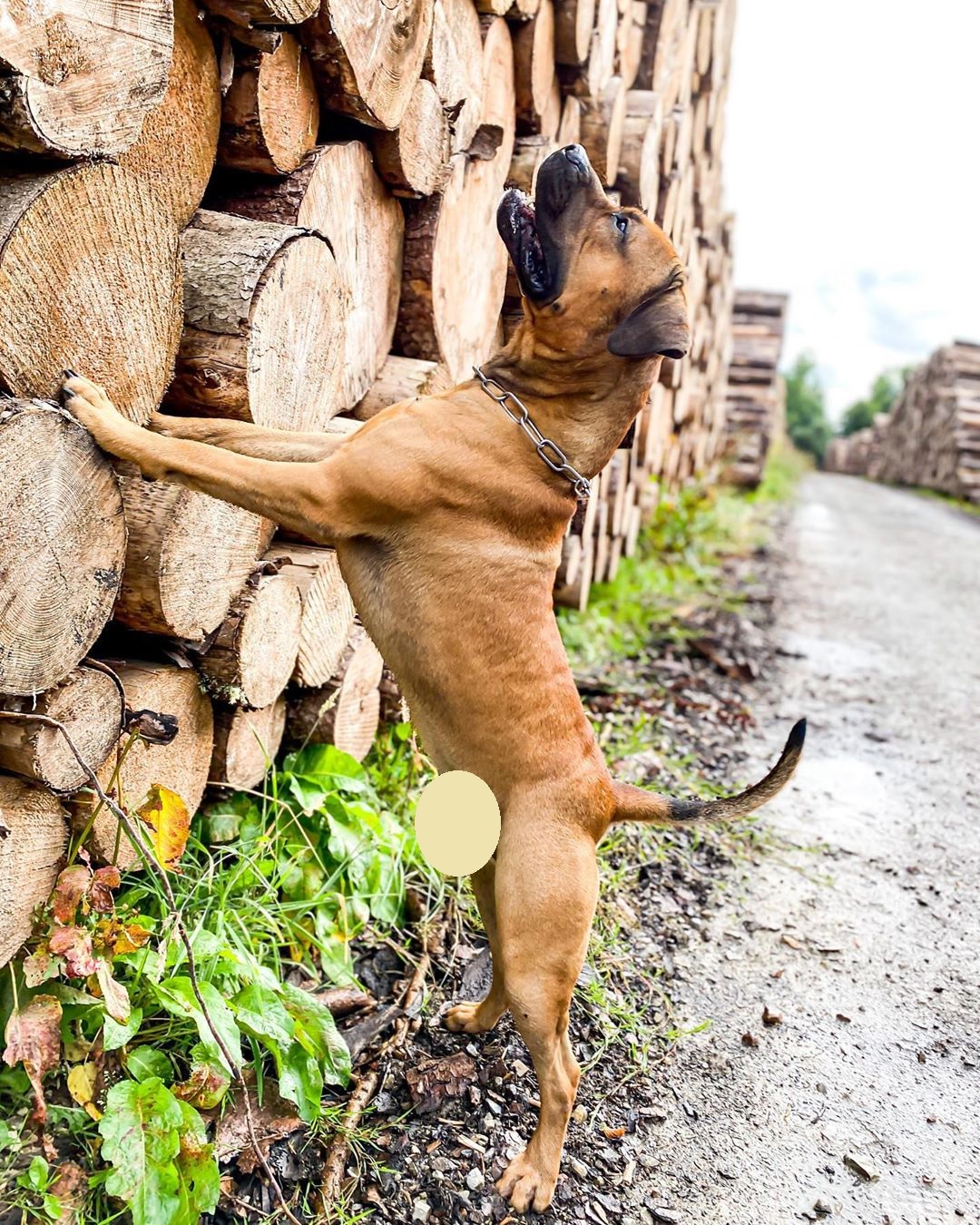
Never, under any circumstances, encourage your pet to be grumpy. If a Boerboel grins at passing dogs and snaps at commands, he must be restrained. At the same time, it is extremely stupid to openly provoke an animal and hope for its iron restraint. So do not succumb to momentary impulses to stroke a random watchdog or cat in the presence of a dog. The South African Boerboel deals with competitors quickly and tough.
Follow the sequence and do not make exceptions to the rules, even if you really want to. The Boerboel’s intellect is not developed enough to be able to distinguish between strict and not very strict prohibitions, so every indulgence awakens in him a desire to spit on the rules of obedience. Therefore, if you really scold your pet for treats from strangers, then do not allow your own guests to tease the animal with treats. Made hug play a tradition? So don’t get hysterical over a soiled designer jacket.
Even if the Boerboel has learned all the commands and demonstrates miracles of ingenuity and obedience, do not relax. Representatives of this breed like to periodically check the owners for strength. For example, performing the exercises the first time at home, the Boerboel may refuse to do the same at the exhibition – and not because he is shy. This sly guy definitely wants the owner to persuade him, thereby allowing the pet to wipe his paws on his own authority. Do not get fooled by such tricks and strictly suppress the animal’s attempts to control you.
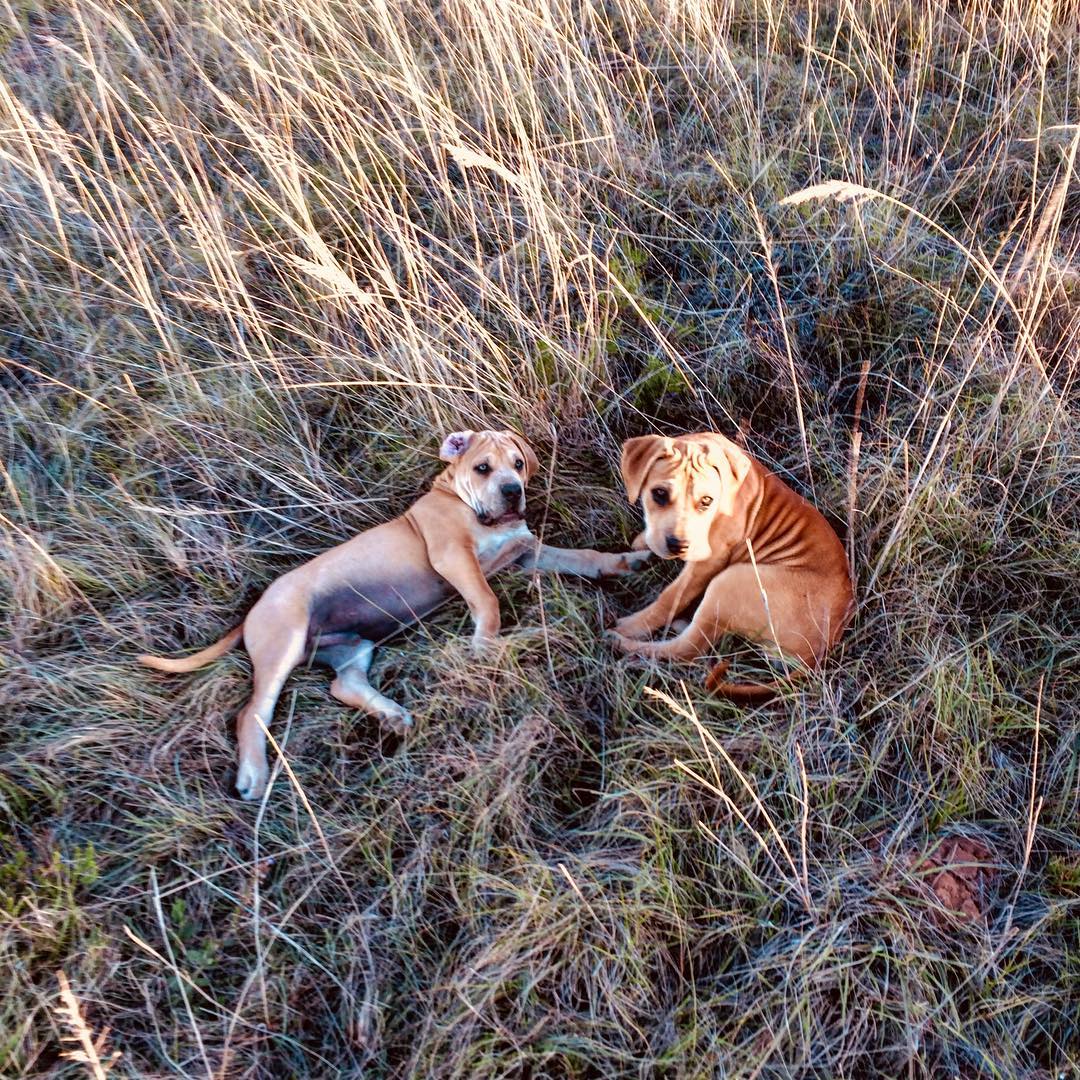
A large, energetic Boerboel will not be very comfortable in a city apartment, although, as the experience of domestic breeding shows, it is ready to adapt to such conditions. Another thing is a country house with an aviary and a cozy kennel, where no one will control every step of the pet. Despite the African past, Boerboels are adapted to the cold of the Russian strip, so they feel fine outside the cottage walls. True, breeders do not recommend leaving them to winter in a wooden booth. Not only does a winter hut in an aviary spoil the dog’s exterior, but it also negatively affects immunity. When placing a booth in the yard, make sure that drafts, which the Boerboels are afraid of, are not blowing into it. It is better to use natural bedding. It is on Boer farms that animals can spend the night on the ground without health consequences – in Russian realities, such an extreme will not work.
Owners who decide to settle a Boerboel in a city apartment will have to slightly distort its interior, or more precisely, cover the floors in the rooms with fabric. On slippery parquet and laminate, the dog’s legs will move apart, which will provoke a defective posture and even injury. This also applies to high horizontal surfaces such as beds, chairs, and sofas. It is strictly forbidden for a young Boerboel to climb on them and dive down because of the weakness of the joints.
Careful with toys. Boerboels, of course, need them, but for safety reasons, it is sometimes better to replace them with raw vegetables such as beets, a small head of cabbage, or an apple. A dog with such powerful jaws can easily bite through ordinary rubber balls by tearing off and chewing a piece of latex, which is fraught with further operation.
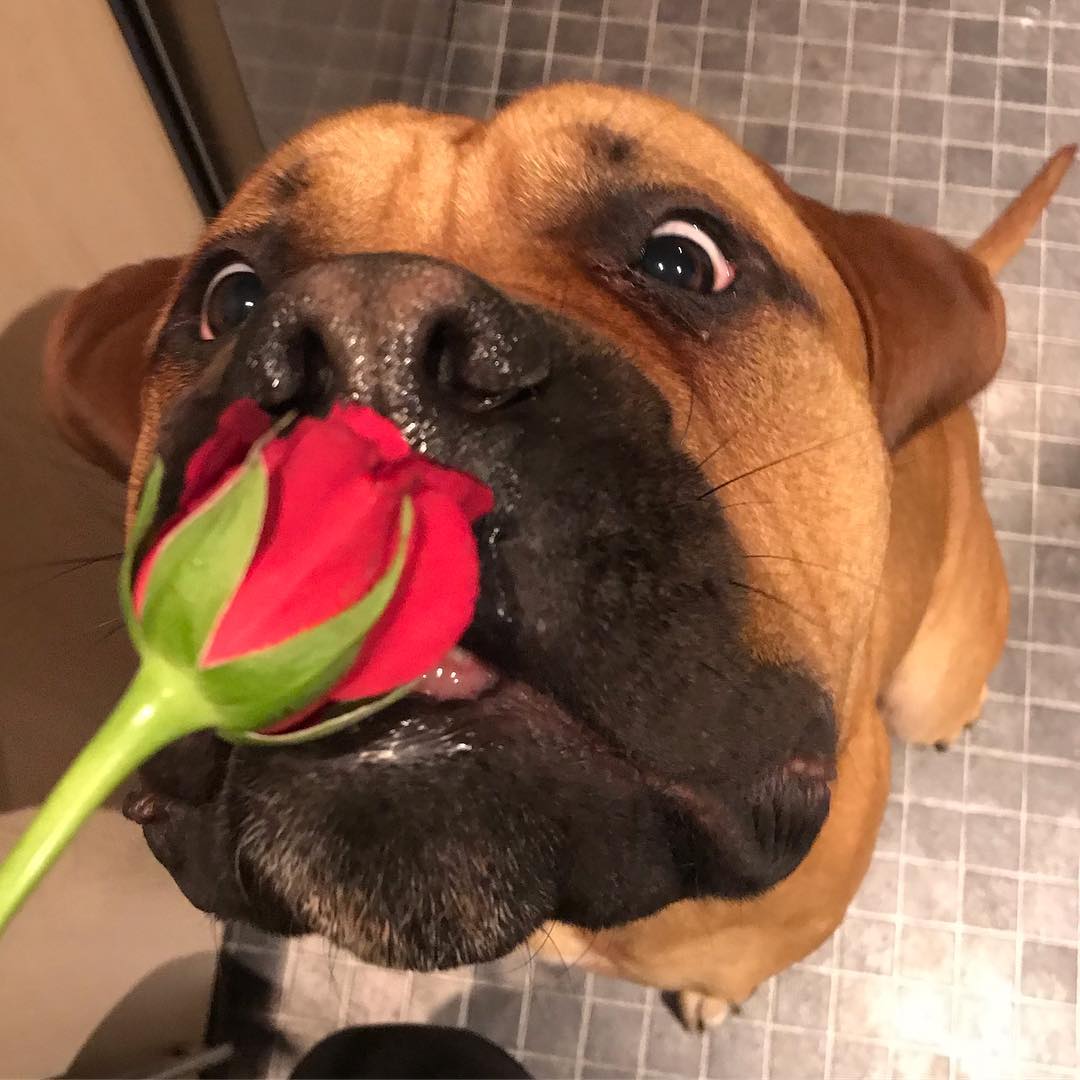
It can be difficult to find a common language with a Boerboel, but it is relatively easy to care for him. Representatives of this breed do not need daily combing and weekly baths, and you will have to spend money on caring cosmetics only if you have a show pet. Ordinary dog shampoo will do for pets. It is definitely worth combing out the dead hair, simultaneously massaging the skin of the animal, but if you miss a week or two, the Boerboel will not turn into a shaggy lump.
Washing “Africans” is allowed only in the warm season and no more than once every couple of months. In winter, it is better to refuse bathing, replacing it with rubbing the wool with snow. Once every 3 days, you should rinse the dog’s eyes with chamomile broth. Experts recommend cleaning the Boerboel’s ears once a month, which does not exempt the owner from daily examination of the rear funnel. If you notice that your four-legged friend is shaking his head, you will have to consult a veterinarian. Usually, this is how animals react to otitis media. Claws should be trimmed if they don’t wear enough when walking, so the longer you walk with the Boerboel, the better for both of you. Pet’s teeth, although infrequently, should still be cleaned, so pick up a zoo once every 3 months and treat the dog’s oral cavity as much as possible.
Walking with a Boerboel is not an ordinary hike “for bread”, but a dynamic mini-marathon. For normal health, the dog should walk 5 or more kilometers a day, so do not hesitate to load your pet with training more. It is better to walk puppies in uncrowded places, gradually changing the route line and looking at busy avenues.
The Boerboel must go outside the apartment strictly on a leash, and in the future, the puppy must learn two techniques of movement: on a short leash and a long one. You can let the animal go on wastelands, where passers-by do not appear, although you will have to monitor its movements here as well. To do this, often use the command “Come to me!” So that the dog does not relax. Be sure to play with the Boerboel or come up with an interesting job for him. The reserve of the strength of the breed is colossal, and it needs to be put somewhere. Keeping your pet energized on the street? He will give her a way out at home, which is unlikely to please you.
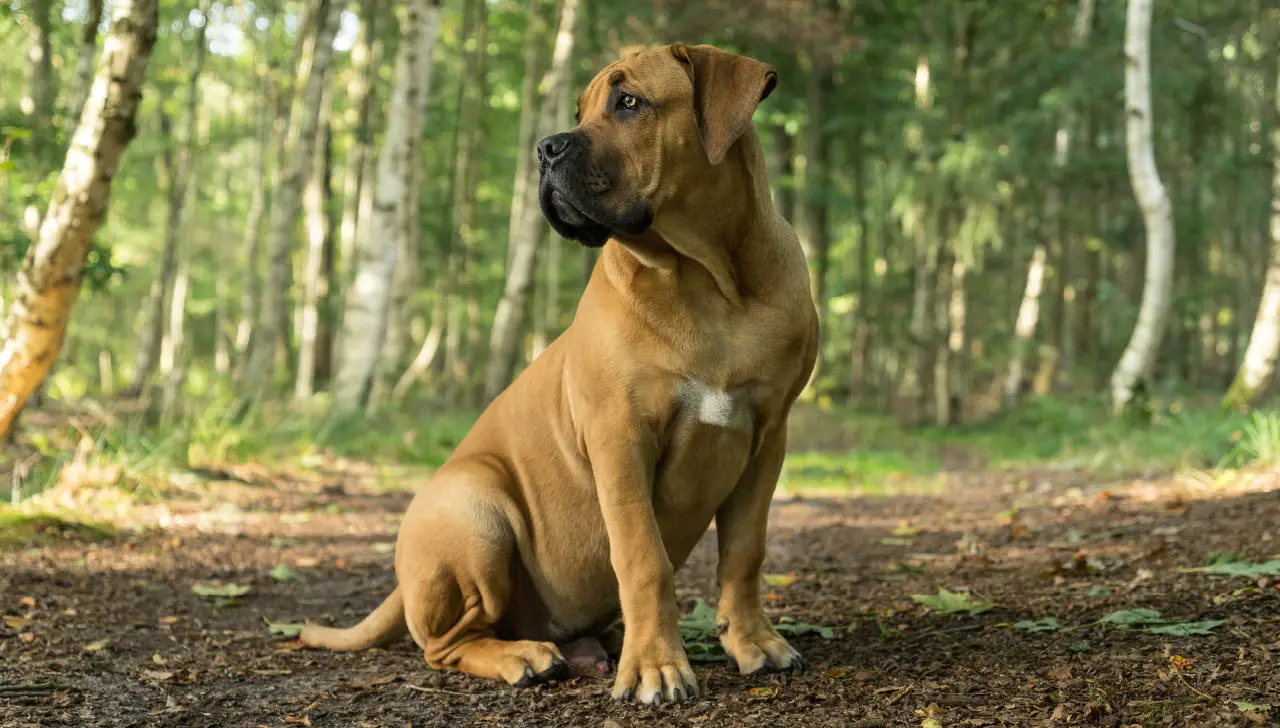
Of all types of meat, beef is more suitable for Boerboel. It should be about half of the daily diet. Lamb, goat, and horse meat are less useful, but as an alternative to beef, they have a place to be. Of the by-products, it is better to prefer the scar, it has an optimal balance of muscle and adipose tissue. But be careful with poultry meat. Give it occasionally and only to puppies that are 3 months old. Include bones and cartilage in the diet of the growing Boerboel, they contain the collagen necessary for canine joints. When deciding on the choice of fermented milk products, stop at 9% cottage cheese and live yogurt and give up kefir, the yeast of which provokes fermentation in the intestines.
List of foods useful for the Boerboel:
- boneless sea fish (except pollock);
- chicken egg (twice a week);
- rice and buckwheat groats;
- vegetables (onions, carrots, cauliflower, tomatoes, radishes, and pumpkin seeds);
- prunes and dried apricots.
Do not give:
- grapes, bananas, any citrus fruits;
- potatoes (occasionally possible if the dog has a healthy gastrointestinal tract);
- oat and wheat groats;
- cow’s milk.
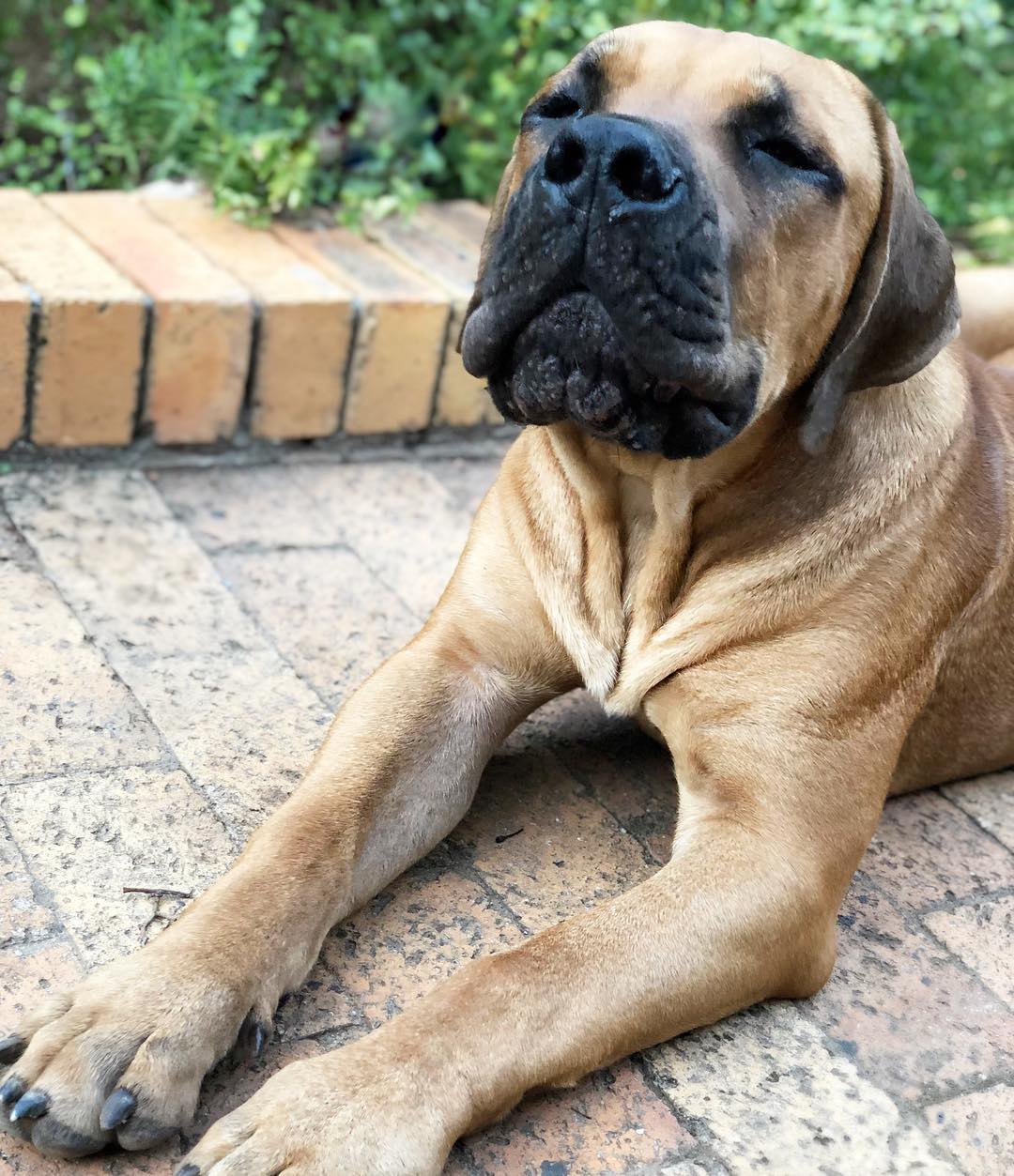
Outwardly invulnerable Boerboel is actually not so big. The weakest point of the breed is the musculoskeletal system, and especially the joints, so bursitis, arthritis, dysplasia of the hip and elbow joints are all about Boerboels. Chondroprotectors added by the owner to the feed of a puppy and a young dog save the situation a little, but you should not rely too much on the healing power of feeding. They suffer from Boerboels and dysbiosis, which develops against the background of non-compliance with nutritional norms, as well as due to the presence of worms in the body.
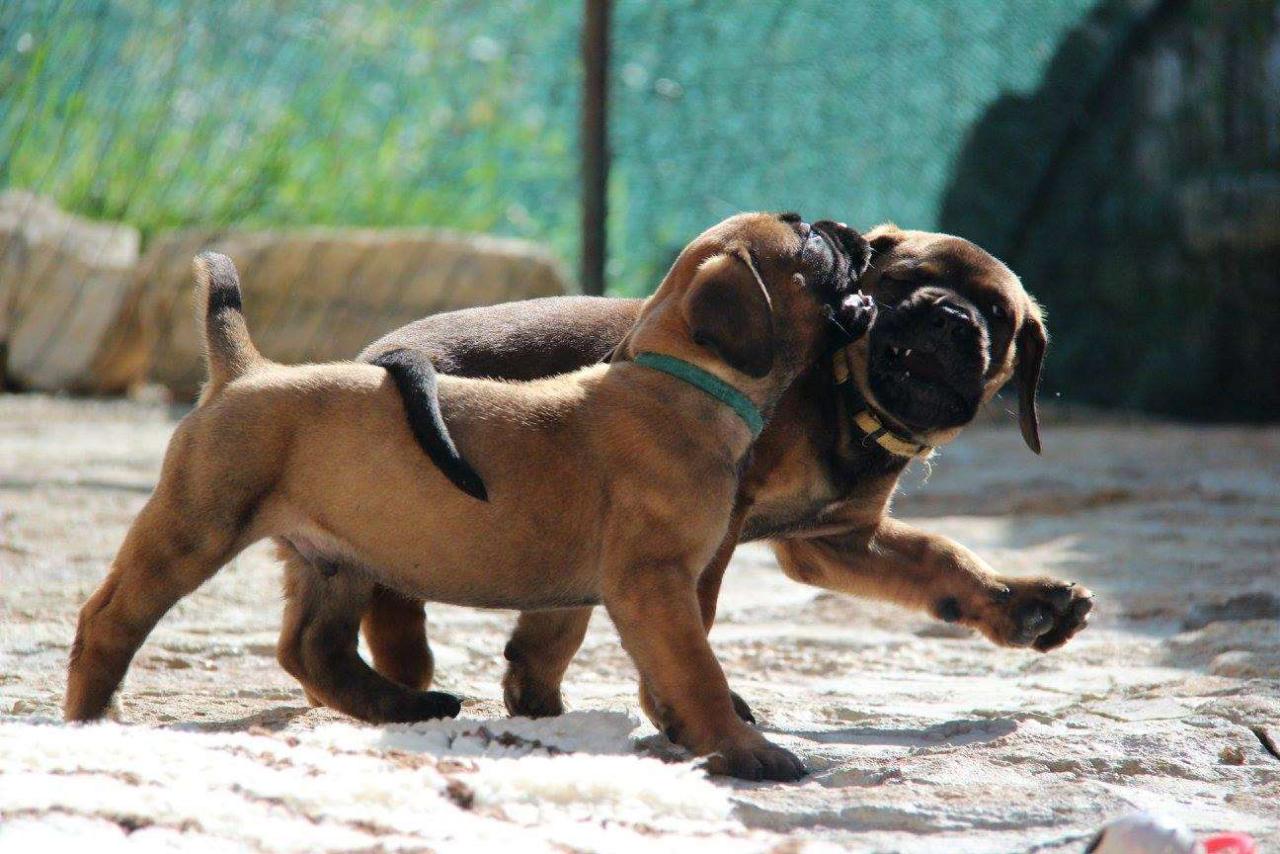
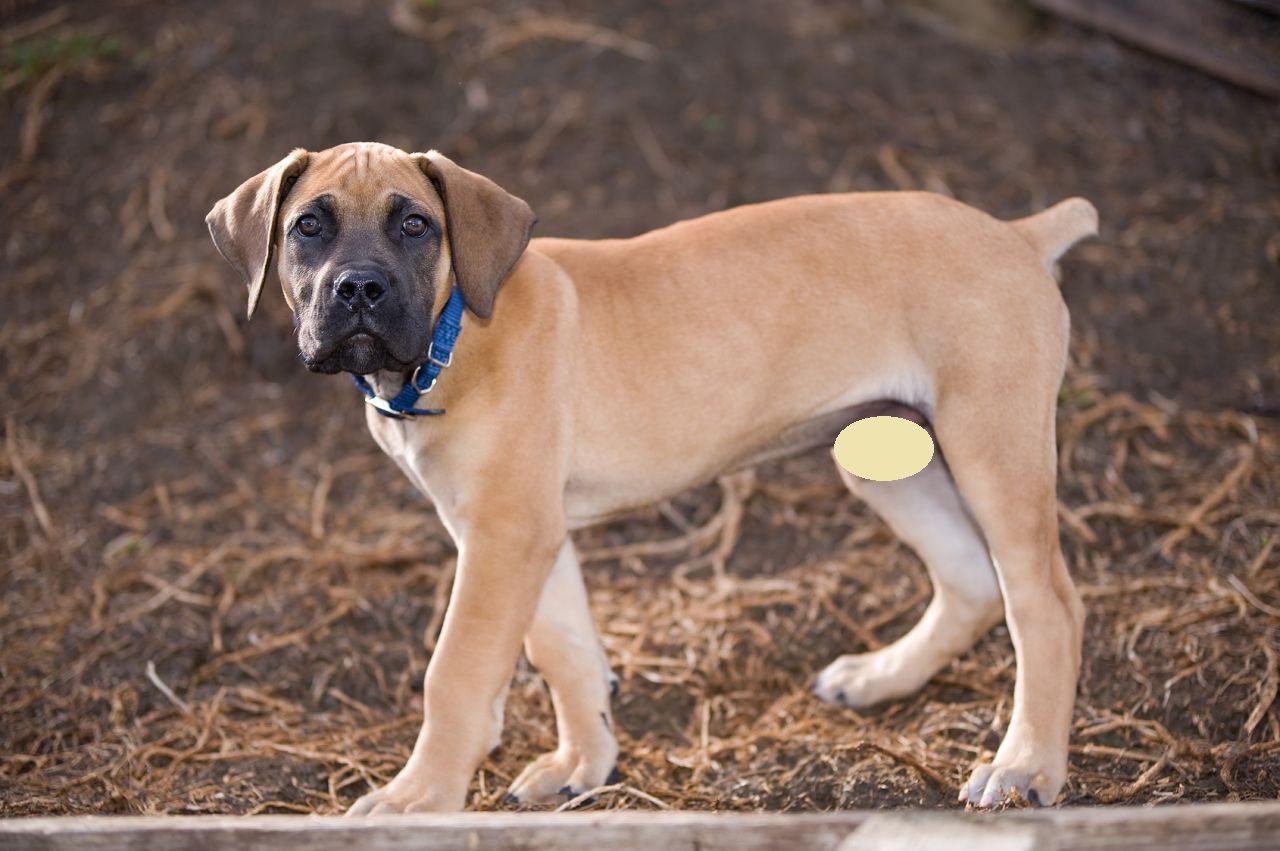
How to choose a puppy?
- View the pedigree of the puppy’s parents. Animals must be registered with the RKF or have registration marks with HBSA, EBBASA, or SABT.
- Champion titles of Boerboels-producers must be confirmed by appropriate certificates. If the breeder has only vague wording instead of documents in stock, it is pointless to waste time examining the puppies.
- If possible, try to inspect the entire droppings. A breeding female is not a photocopier, and each Boerboel born by her has individual advantages and disadvantages.
- Test your puppy for working qualities. Ruffle the bag or click with your fingers. A kid with the makings of a security guard will definitely listen to sudden sounds, and possibly bark.
- The optimal age for buying a Boerboel is 1.5-2 months. Then the puppy grows intensively, due to which his appearance undergoes serious changes.
- Collect as much information as possible about the breed. Go to exhibitions, visit training grounds, talk with Boerboel owners. This will help you understand how ready you are to get a tough “African”.
- Choose a nursery whose staff provides advisory support to buyers throughout the year. From them you can learn the basic subtleties of caring for a small Boerboel.*

